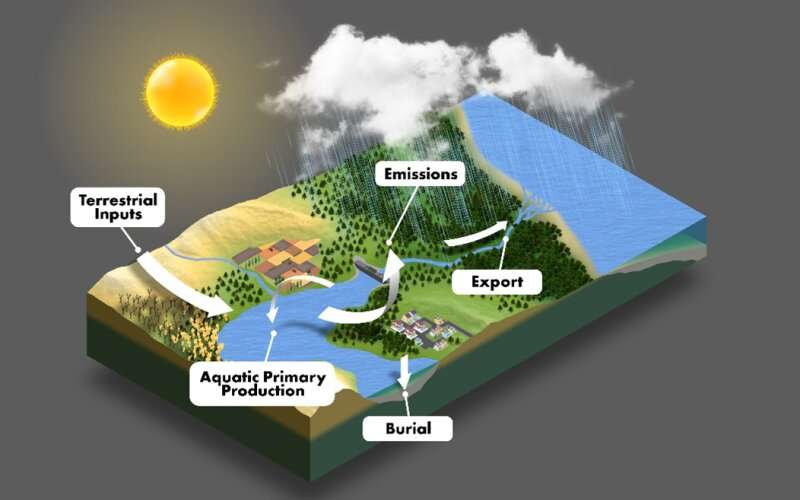Study finds inland water carbon emissions are being undercounted

Global carbon emissions from inland waters such as lakes, rivers, streams and ponds are being undercounted by about 13% and will likely continue to rise given climate events and land use changes, Oak Ridge National Laboratory scientists have found.
In their study published in Global Change Biology, the researchers estimate that inland waters pump out 4.4 billion metric tons of carbon to the atmosphere annually, based on new modeling of previous estimates and improved sampling and data from more types of bodies of water, including those that have dried or are shrinking. About 73% of this carbon is emitted as carbon dioxide or methane.
Earth system modelers are paying increased attention to the complex biogeochemical processes at play in inland waters.
"About 70% to 80% of carbon entering inland waters from land doesn't make it to the ocean; it's processed inland first," said ORNL's Rachel Pilla. "This is a missing piece of the puzzle for Earth system models to better predict and prepare us for the future."
No comments:
Post a Comment